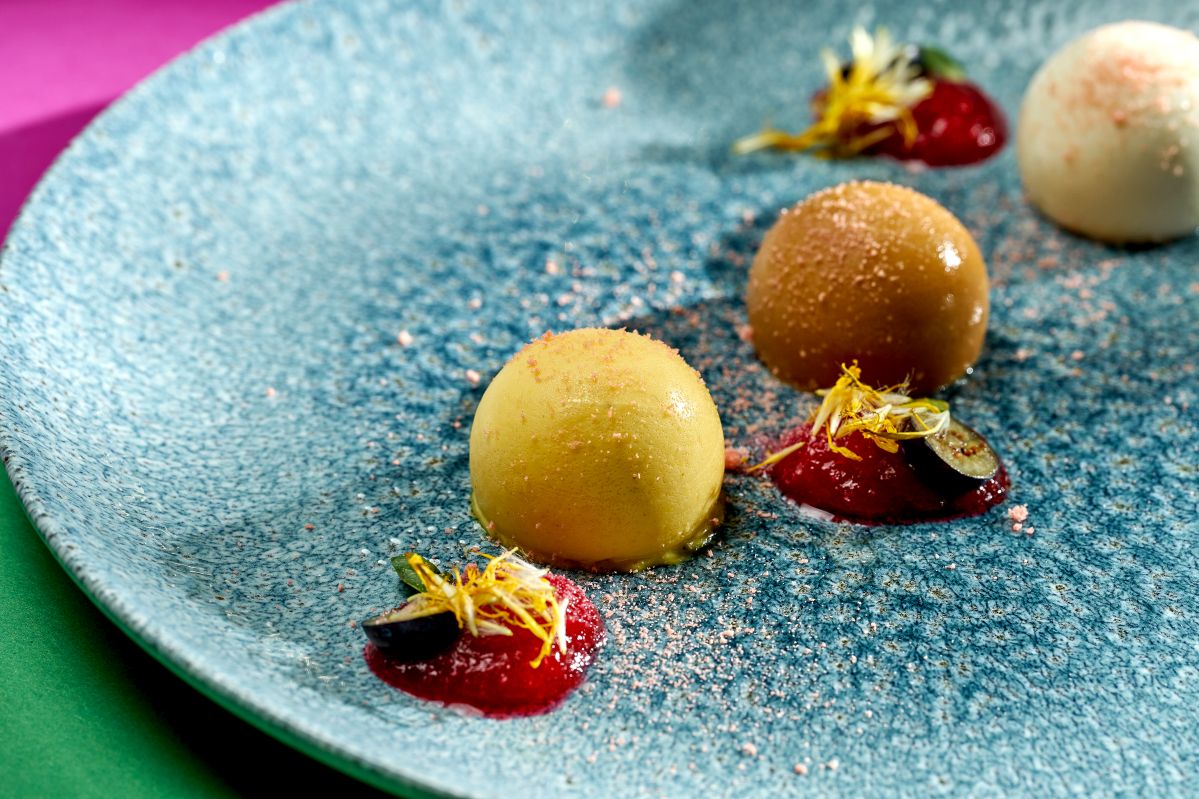Espuma, or molecular foam: what is it and how to prepare it?
Do you want to learn about one of the most innovative and fascinating manifestations of contemporary molecular gastronomy? Espuma is a culinary technique that has recently grown in popularity. It allows a wide range of ingredients to be transformed into a light, ethereal foam, offering not only a unique texture, but also an intensification of flavours. The process of preparing espuma requires precision and an understanding of basic chemistry making it both a culinary art and a science.
Contents
What is espuma and what can it be made of?
Molecular foam, more widely known as espuma, represents a modern culinary technique that allows a variety of ingredients to be transformed into a light and fluffy form. It’s characterised by a unique texture and intensity of flavour. The basis of its preparation lies in the use of stabilisers – natural substances that allow air to be retained in microscopic bubbles, thus providing the final product with its characteristic foamy texture. Among the most commonly used stabilisers are soya lecithin, gelatine, agar-agar or methyl cellulose, which are selected according to the type and properties of the ingredient to be processed.
How do you make espuma?
The technique boils down to the introduction of air bubbles into a liquid or semi-liquid base using stabilisers. They are key, as they provide structure and stability to the foam, enabling it to maintain the right form over a longer period of time. Depending on the ingredients used, you may achieve a variety of foam textures, from light and delicate to creamier and thicker.
The uniqueness of the foaming method lies in its ability to transform a wide range of products such as fruit, vegetables, meats and beverages into a form that preserves the essence of flavour while providing a completely unique culinary experience. The preparation of a molecular foam requires not only the precise selection and proportioning of ingredients, but also the use of the right equipment. Siphons fitted with gas cartridges are most commonly used to make espuma.

What accessories are needed to prepare the foam?
An essential tool for making espuma is a siphon for compressed gas cartridges. It plays a central role in creating a light and consistent foam structure. It’s indispensable in the aeration of liquids as it allows for rapid and even distribution of bubbles in the mix. Its precise mechanism allows a chef to control the strength and amount of pressurised gas, which has a direct impact on the texture and stability of the final foam.
Beside the siphon, it’s equally important to have a set of sieves and fine filters to remove any lumps or unwanted particles from the mixture before it’s pressurised. This step is crucial for achieving the smoothness and uniformity of the foam, which significantly affects the final visual and taste experience.
Why is it worth trying this molecular gastronomy technique?
This innovative method allows the exploration of previously unknown culinary possibilities, transforming traditional ingredients into extraordinary dishes that delight in both appearance and flavour. Molecular foams offer a depth of flavour that can be difficult to achieve with traditional cooking methods. Even a small amount of foam can significantly enrich the taste experience, offering chefs new opportunities to stimulate their guests’ senses.
The visual aspect is also significant. Molecular foam adds elegance and modernity to dishes, which is particularly appreciated in fine dining restaurants. The impeccable food presentation is just as important as its taste. The delicate foam cloud has the ability to elevate the guest experience and create that “wow” effect which surprises and delights diners.
Espuma – a unique experience for the palate
The quintessentially modern culinary art, espuma is not only an expression of a chef’s artistic vision, but above all, it offers an unforgettable experience for the palate. Molecular gastronomy attracts the attention of foodies, looking for new and exciting taste experiences. If you too want to try out modern cooking techniques in your restaurant or patisserie, contact us to find out more about the use of food-grade gasses in gastronomy.
